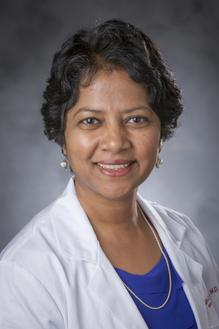
With COVID-19 being a fixture of our lives for nearly a year now, science has been a staple in the news. Along with science, though, a long-overdue conversation about the state of race relations in America has taken center stage, which makes diversity in science a critical topic to delve into. COVID-19 has highlighted not only a national crisis in healthcare response, but also longstanding health disparities across racial and socioeconomic groups that have only been exacerbated by the pandemic.
On Wednesday, January 27, Dr. Gowthami “Gow” Arepally, known for her work as Professor of Hematology at the Duke School of Medicine, led a talk called “The Diversity Problem in Science” that aimed to highlight not only the obvious problems in research but the urgency with which everyone, from the individual to the collective level, should aim to address the problem within their spheres of influence. Dr. Arepally is not only known for her work in the medical school but also as a valuable mentor for colleagues, undergraduates, and high school students — a point that was highlighted as an important way non-URM (under-represented minority) scientists can make a difference.
Underrepresentation in science starts early, Arepally says. For example, while discrepancies in graduation rates between Black/Hispanic students and their white/Asian peers are not bad in high school, they get progressively worse through college and beyond. In 2016, 18% of degrees nationally were awarded overall in STEM fields — but this number drops to 12% for Black students and 15% for Hispanic students. As of 2015, Black applicants have lower medical school acceptance rates than peer applicants – 34% versus 44% for their white counterparts. And the numbers get worse further into medical school; Black students and Hispanic students each represent less than 6% of medical school graduates, while a staggering 80% of graduates are either white or Asian.
This perpetuates a cycle going into the workforce that discourages young underrepresented minority (URM) students from entering STEM, seeing a lack of role models that look like them. As of 2016, only 39% of full-time faculty at medical schools were female, and a mere 4% of faculty were Black. This results in barriers to NIH research that further hold URM scientists back. Between 1999 and 2012, 72% of NIH awards were given to white scientists and 24% were given to Asian scientists, but only 2.4% of these awards were given to Black scientists.
This is a story that is shocking when told through statistics but is all too familiar, as an experience, for minority students and researchers interested in pursuing careers in the sciences. However, there are concrete ways to counter the problem. As Dr. Arepally pointed out, NIH Diversity Supplements for existing NIH grants can be obtained from the high school to faculty level as an added source of support for URM researchers. Medical societies themselves can be sources of diversity initiatives, such as Dr. Arepally’s society, the American Society of Hematology, which boasts one of the most aggressive minority recruitment initiatives. Within Duke, many pipeline programs exist for researchers to support URM students and new researchers and faculty.
Most importantly, it’s important for individuals to enact change on a personal level. Whether it means educating oneself on underrepresentation, advocating for the advancement of other URM trainees and colleagues, or committing to the success of URM students through pipeline programs, individual steps can add up.
And as Dr. Arepally highlighted, these steps, however small, are important to prioritize. Increasing diversity in medicine, for example, can help address existing health disparities. URM physicians are more likely to address the care of minority populations, while minority patients are more likely to choose URM populations. And the existence of more URM physicians improves the cultural competency of all trainees. Sex diversity, too, has a positive effect on the quality of science in collaborative groups. The impacts of diversity extend to role-modeling for younger students, who may be at a crossroads in terms of determining a future career. In this way, current measures to increase diversity can foster a cycle of more diverse students entering STEM and being supported there, for generations to come.
Diversity in science is not only good for science and scientists, Arepally says, but for all of us. Science should reflect the society it serves, and with more diversity in science, breakthroughs will be applicable and accessible to every person — not just the majority.
First published in the Duke Research Blog